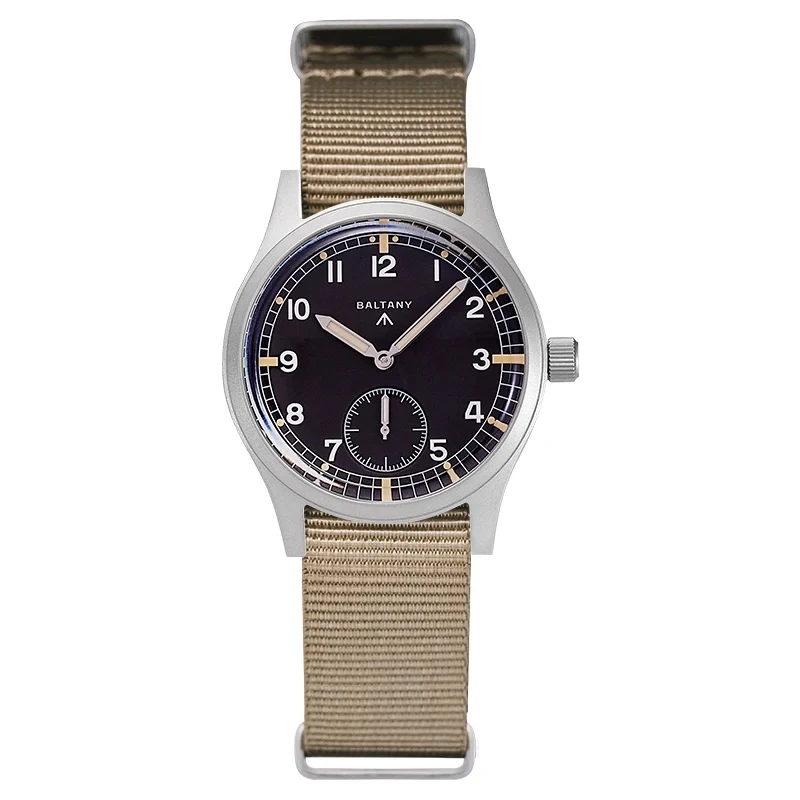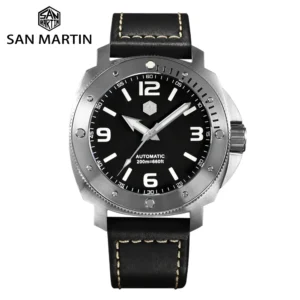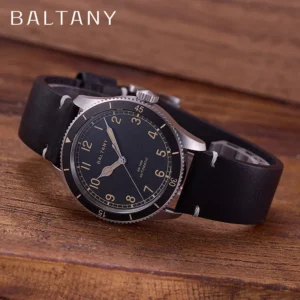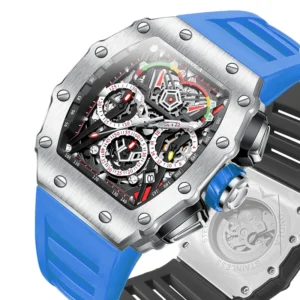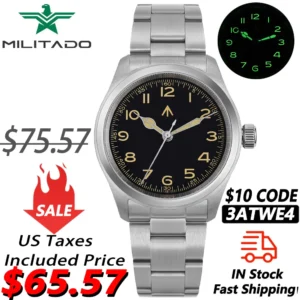The Critical Role of Field Watches in Combat Operations
A field watch in combat isn’t just a timepiece—it’s a critical tactical tool that can mean the difference between mission success and failure. Unlike civilian watches, combat field watches are purpose-built instruments designed to withstand extreme conditions while providing vital information to military personnel.
Throughout history, synchronized operations have relied heavily on accurate timepieces. From coordinated artillery barrages in World War I to modern special operations, precise timing remains fundamental to military strategy. The evolution of military field watches demonstrates their growing importance as warfare has become increasingly timing-dependent.
In combat zones, watch reliability becomes paramount for several reasons:
- Coordination of multi-unit operations requiring split-second timing
- Navigation when electronic systems are compromised
- Tracking mission duration for resource management
- Maintaining operational schedules in any environment
Today’s combat operations demand watches that excel in multiple functional categories:
– Physical durability against environmental extremes
– Clear readability under all conditions
– Stealth capabilities to maintain tactical advantage
– Reliable power systems for extended deployment
– Secure attachment to prevent loss during combat
These specialized timepieces found in automatic field military watches collections combine centuries of battle-tested design with modern materials and engineering.
Durability Features: Surviving Combat Conditions
Shock Resistance Specifications
In combat environments, watches face extreme physical impacts—from the recoil of firearms to hard landings during parachute deployment. Proper shock resistance is non-negotiable.
The ISO 1413 standard provides a baseline for shock resistance, requiring watches to withstand a hammer strike equivalent to dropping onto a hardwood floor from one meter. However, combat-ready watches typically exceed this standard significantly, with some models capable of withstanding forces up to 5,000G.
Key shock protection features include:
– Suspended movement systems that float the timekeeping mechanism
– Rubber or elastomer mounting rings that absorb impacts
– Reinforced case construction with impact-absorbing zones
– Protected crown designs that prevent damage during impacts
Water Resistance Ratings
Combat operations don’t pause for weather, making water resistance crucial for field watches. The standard ratings take on specific military relevance:
- 100m (10 ATM): Minimum acceptable for general military use, suitable for rain and brief immersion
- 200m (20 ATM): Standard for amphibious operations, capable of handling river crossings and decontamination procedures
- 300m+ (30+ ATM): Required for maritime special operations and diving missions
Superior water resistance depends on advanced sealing technologies:
– Triple-sealed screw-down crowns prevent water ingress at control points
– Precision-engineered case back seals maintain integrity under pressure
– Pressure testing beyond stated ratings ensures performance margin
Materials That Withstand Extreme Conditions
The comprehensive history of field watch development shows how material science has advanced to meet military demands. Modern combat watches employ specialized materials:
Case Materials:
– 316L Stainless Steel: Excellent corrosion resistance, good impact strength
– Titanium: Superior strength-to-weight ratio, non-magnetic, corrosion-resistant
– Carbon Composites: Extreme lightness, exceptional durability, non-reflective
Crystal Options:
– Sapphire: Nearly scratch-proof (Mohs hardness of 9), superior clarity
– Mineral Crystal: More shatter-resistant than sapphire but less scratch-resistant
– Sapphire-Coated Mineral: Balance of scratch and shatter resistance
Protective Coatings:
– Physical Vapor Deposition (PVD): Creates a thin, hard surface layer resistant to scratches
– Diamond-Like Carbon (DLC): Superior hardness, corrosion resistance, and low friction
Temperature Tolerance Requirements
Combat watches must function across extreme temperature ranges encountered in global deployments:
– Arctic environments: Operation down to -40°F (-40°C)
– Desert conditions: Performance up to 160°F (71°C)
– Rapid temperature changes: Resistance to thermal shock
Temperature extremes affect watch functionality in several ways:
– Lubricants may thicken in cold or thin in heat, affecting accuracy
– Battery performance decreases dramatically in extreme cold
– Seals can contract or expand, potentially compromising water resistance
– LCD displays may freeze or blackout in temperature extremes
Watches built for professional spec dive watches standards often meet or exceed the temperature tolerance needed for combat operations.
Legibility Features: Rapid Information Access Under Pressure
Dial Design Principles for Combat Effectiveness
In life-or-death situations, the ability to read your watch instantly becomes critical. Combat-optimized dial designs follow specific principles:
- Maximum contrast between hands, markers, and dial face
- Simplified, bold numerals sized for instant recognition
- Strategic use of negative space to reduce visual clutter
- Logical information hierarchy prioritizing critical data
Effective military dials typically feature:
– 12/24-hour marking options with prominent indicators at key positions
– Subdials positioned for minimal interference with primary time reading
– Reduced decorative elements that might create confusion
– Consistent design language for all indicators
Luminescence Technologies and Their Tactical Applications
Low-light visibility remains one of the most critical features for combat watches. Modern luminous technologies offer significant advantages over historical radium-based solutions:
Super-LumiNova:
– Photoluminescent material that stores light and emits it slowly
– Requires “charging” through exposure to light sources
– Provides bright initial glow that gradually diminishes
– Non-radioactive and environmentally safe
– Available in various colors for different tactical needs
Tritium (H3) Gas Tubes:
– Self-illuminating through radioactive tritium (hydrogen-3)
– Requires no charging and maintains consistent brightness
– Typical effective life of 10-25 years before significant dimming
– Lower initial brightness than Super-LumiNova but more consistent
– Minimal radiation risk due to containment in glass tubes
Strategic application patterns maximize readability:
– Full hand coverage rather than partial tips
– Differentiated shapes between hour and minute markers
– Extended luminous material at key orientation points (12, 3, 6, 9)
– Luminous bezel markers for timing functions
Hand Design for Quick Time Interpretation
Hand design significantly impacts how quickly information can be processed:
- Distinct shapes for each hand (sword, arrow, needle)
- Proportional sizing with hour hands typically shorter and broader
- Contrasting colors or luminous patterns between hands
- Counterbalanced designs to maintain accuracy
Anti-Reflective Coatings and Their Dual Purpose
Anti-reflective coatings serve both tactical and functional purposes:
– Enhance dial visibility by reducing glare up to 99.5%
– Eliminate reflection that could compromise position
– Improve contrast in challenging lighting conditions
– Protect underlying crystal from minor abrasions
Tactical automatic watches typically feature multiple layers of AR coating on both sides of the crystal for optimal performance.
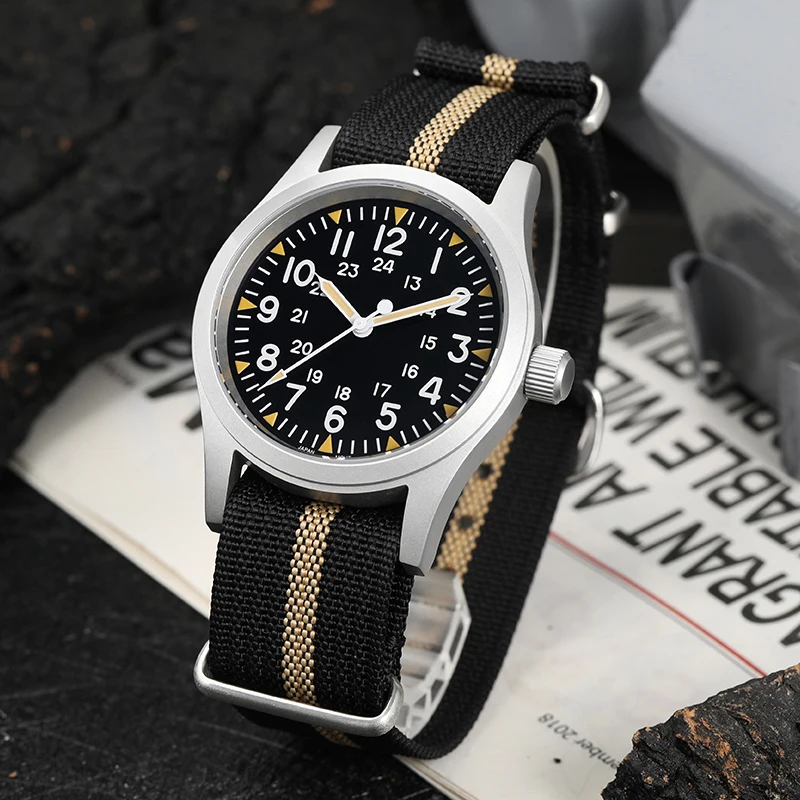
Stealth Attributes: Maintaining Tactical Advantage
Non-Reflective Surface Treatments and Materials
The military necessity that forged modern field watch design prioritized minimizing reflections that could reveal a soldier’s position. Modern combat watches employ various techniques:
- Matte finishing through micro-abrasion creates a non-reflective surface
- PVD/DLC coatings in black or earth tones absorb rather than reflect light
- Bead-blasted surfaces diffuse any reflection across multiple angles
- Recessed crystals sit below the bezel to prevent direct light reflection
These treatments must maintain their non-reflective properties despite wear and impacts, making durability and stealth inseparable requirements.
Sound Reduction Considerations
In close-quarters combat or surveillance operations, noise discipline extends to equipment:
- Quartz movements offer nearly silent operation
- Automatic movements can be designed with enhanced dampening
- Secure strap attachments prevent metal-on-metal contact noise
- One-piece strap designs eliminate buckle rattling
- Crown guards reduce incidental contact noise
Colorway Selection for Environmental Integration
Combat watches typically adopt colorways that integrate with standard combat environments:
- Desert/arid: Tan, coyote brown, sand
- Woodland: Olive drab, forest green, brown
- Urban/industrial: Gray, black, concrete tones
- Maritime: Navy blue, black, gray
Many tactical watches feature non-gloss black components that work across multiple environments while avoiding contrast that draws attention.
Low-Profile Design Elements
The physical profile of a combat watch impacts both comfort and concealment:
- Reduced case height minimizes snagging on equipment and visibility
- Protected crown designs (4 o’clock position or crown guards) prevent damage and reduce profile
- Flush bezel designs eliminate catch points
- Smoothed case transitions reduce shadow-casting edges
These design elements combine to create a watch that remains invisible until needed, preserving tactical advantage in combat scenarios.
Movement Types: Selecting the Optimal Power System
The heart of any field watch is its movement—the power and regulation system that keeps time. Each type offers distinct advantages and limitations in combat environments.
| Movement Type | Power Source | Accuracy | Durability | Maintenance | Combat Advantages | Combat Limitations |
|---|---|---|---|---|---|---|
| Quartz | Battery | ±15 sec/month | High shock resistance | Battery change every 2-5 years | Consistent accuracy, lightweight | Battery dependency, EMP vulnerability |
| Automatic | Kinetic (self-winding) | ±5-30 sec/day | Moderate shock resistance | Service every 3-7 years | No battery required, constant operation during activity | Requires regular motion to maintain power, susceptible to magnetism |
| Solar | Light energy | ±15 sec/month | High shock resistance | Battery replacement every 10+ years | Extended power reserve, reduced maintenance | Requires periodic light exposure, complex component repair |
Quartz Movement Advantages and Limitations
Quartz movements provide exceptional accuracy through electronic oscillation of a quartz crystal:
- Battery life typically ranges from 2-5 years depending on complications
- Superior accuracy retention during heavy impacts and vibration
- Less affected by positional changes or temperature fluctuations
- Vulnerable to electromagnetic pulse (EMP) events
Field replacement strategies for quartz watches include carrying spare batteries and basic replacement tools. Some advanced tactical quartz watches feature accessible battery compartments designed for field servicing.
Automatic/Mechanical Movement Performance
The performance of automatic watches in military service highlights unique advantages:
- Self-sustaining power generation through natural movement
- No dependency on batteries or external power sources
- Continued operation in EMP environments
- Mechanical simplicity allows field repairs in some cases
Modern automatic movements have addressed historical weaknesses:
– Anti-magnetic materials protect against field equipment interference
– Enhanced shock absorption systems protect balance assemblies
– Improved lubricants maintain performance across wider temperature ranges
Solar-Powered Systems for Extended Deployments
Solar technology combines quartz accuracy with extended power independence:
– Power reserves ranging from 2-12 months without light exposure
– Ability to charge through artificial light when natural light is unavailable
– Backup power systems that maintain core timekeeping during low charge
– Hardened solar cells resistant to impact and environmental damage
Hacking Seconds Feature Importance
The ability to stop the second hand by pulling out the crown (“hacking”) is crucial for military operations:
– Enables precise synchronization between multiple units
– Allows accurate coordination with operation timetables
– Critical for timing-dependent tactical maneuvers
– Available across most movement types in combat-oriented watches
Military Inspired Automatic Watches, Rugged Automatic Watches, Tactical Automatic Watches
Price range: $852.14 through $994.60 Select options This product has multiple variants. The options may be chosen on the product pageBronze Automatic Watches, Military Inspired Automatic Watches, Professional Spec Dive Watches
Price range: $1,442.21 through $1,442.82 Select options This product has multiple variants. The options may be chosen on the product pageProfessional Spec Dive Watches, Titanium Automatic Watches
$574.74 Select options This product has multiple variants. The options may be chosen on the product pageClassic Pilot Watches, Military Inspired Automatic Watches
$561.00 Select options This product has multiple variants. The options may be chosen on the product pageRugged Automatic Watches, Unique Automatic Watches
Price range: $228.96 through $231.10 Select options This product has multiple variants. The options may be chosen on the product pageClassic Field Watches, Military Inspired Automatic Watches
Price range: $280.87 through $338.51 Select options This product has multiple variants. The options may be chosen on the product page
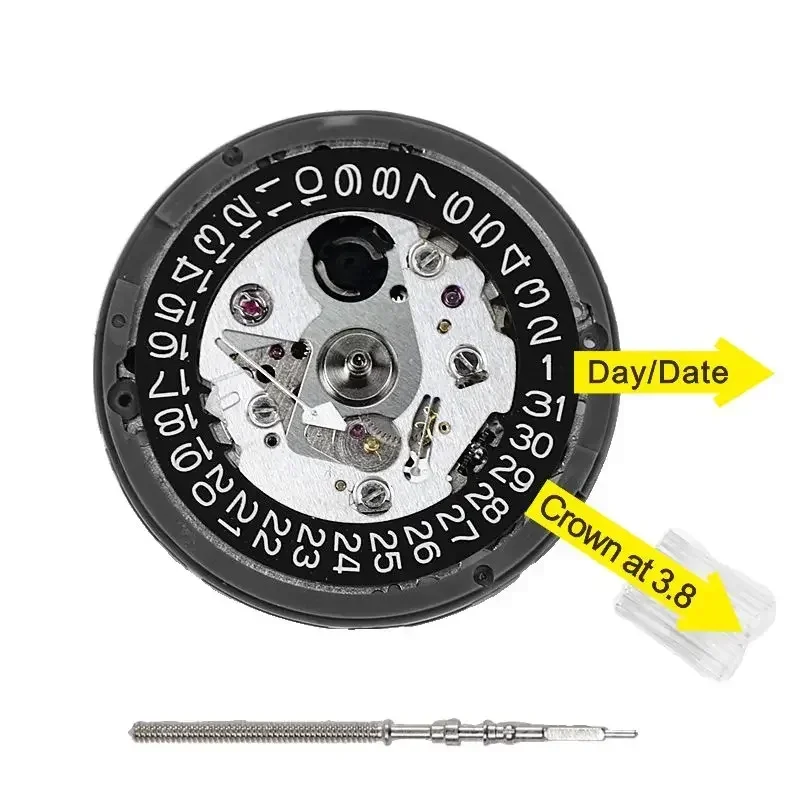
Strap and Attachment Systems: Secure Deployment
Material Selection Criteria for Combat Environments
Strap materials for combat watches must balance durability, comfort, and functionality:
Nylon Straps (NATO/Zulu):
– Exceptional tensile strength (typically 200-300 lbs breaking strength)
– Quick-drying (2-4 hours vs 6-12 for leather)
– Non-reflective texture and available in camouflage patterns
– Remains functional when wet or in extreme temperatures
– Easily cleaned and decontaminated
Rubber/Silicone:
– Chemical resistance against fuels, oils, and decontamination agents
– Waterproof and non-absorbent
– Temperature stable from -40°F to 300°F (-40°C to 149°C)
– Flexible in cold conditions where nylon may stiffen
– Easy to clean in field conditions
Metal Bracelets:
– Maximum durability for extended deployments
– Superior resistance to cutting or tearing
– Typically includes diver’s extension for use over gear
– Requires no drying time after immersion
Attachment Security Features
Combat strap systems employ multiple security features:
– Spring bar alternatives such as screw bars or NATO-style pass-through design
– Redundant retention systems that maintain attachment if one point fails
– Quick-release mechanisms for emergency removal
– Adjustable sizing for use over tactical gear or directly on wrist
Comfort Considerations During Extended Operations
Extended wear comfort becomes critical during long-duration missions:
– Ventilation channels reduce moisture buildup in hot environments
– Tapered designs distribute pressure evenly around wrist
– Rounded edges prevent chafing against equipment and clothing
– Elasticity accommodates minor swelling from exertion or altitude
Field Replacement and Adjustment Capabilities
Combat-oriented strap systems are designed for field maintenance:
– Tool-free adjustment points for on-the-go sizing
– Modular components that can be replaced individually
– Field-expedient repair compatibility (can be fixed with basic materials)
– Universal sizing compatibility for emergency replacement
Classic field watches often feature these tried-and-true attachment systems that prioritize reliability and simplicity.
Advanced Tactical Features: Beyond Basic Timekeeping
Navigation Capabilities Critical for Field Operations
Modern combat watches often include navigation tools essential when GPS systems fail:
– Bidirectional rotating bezel compasses for basic orientation
– Digital compass functions accurate to ±2-5 degrees
– GPS integration with coordinate memory functions
– Ability to track and mark waypoints for navigation
These systems allow operators to:
– Determine direction without electronics
– Maintain course during limited visibility conditions
– Record critical location data for later reference
– Navigate using military grid reference systems
Environmental Monitoring Systems
Combat watches may incorporate environmental sensors providing tactical information:
– Altimeters accurate to ±10-30 feet for vertical navigation
– Barometric pressure tracking to anticipate weather changes
– Temperature sensors for environmental hazard awareness
– Depth gauges for water operations
These systems require regular calibration to maintain accuracy, with field calibration procedures typically involving reference to known altitude points or current barometric readings.
Mission-Specific Tactical Functions
Specialized timing features enhance tactical capabilities:
– Chronograph functions allow precise event timing
– Count-down timers for mission-critical timing
– Tachymeter scales for speed/distance calculations
– Tide tracking for littoral operations
The functionality of GMT across time zones proves particularly valuable for coordinating operations across international boundaries and maintaining awareness of both local and home base times.
Data Retention and Security Considerations
Advanced combat watches must balance functionality with security:
– Limited connectivity reduces electronic signature
– Encrypted data storage protects sensitive information
– Physical security features prevent unauthorized access
– Memory clearing functions for compromise situations
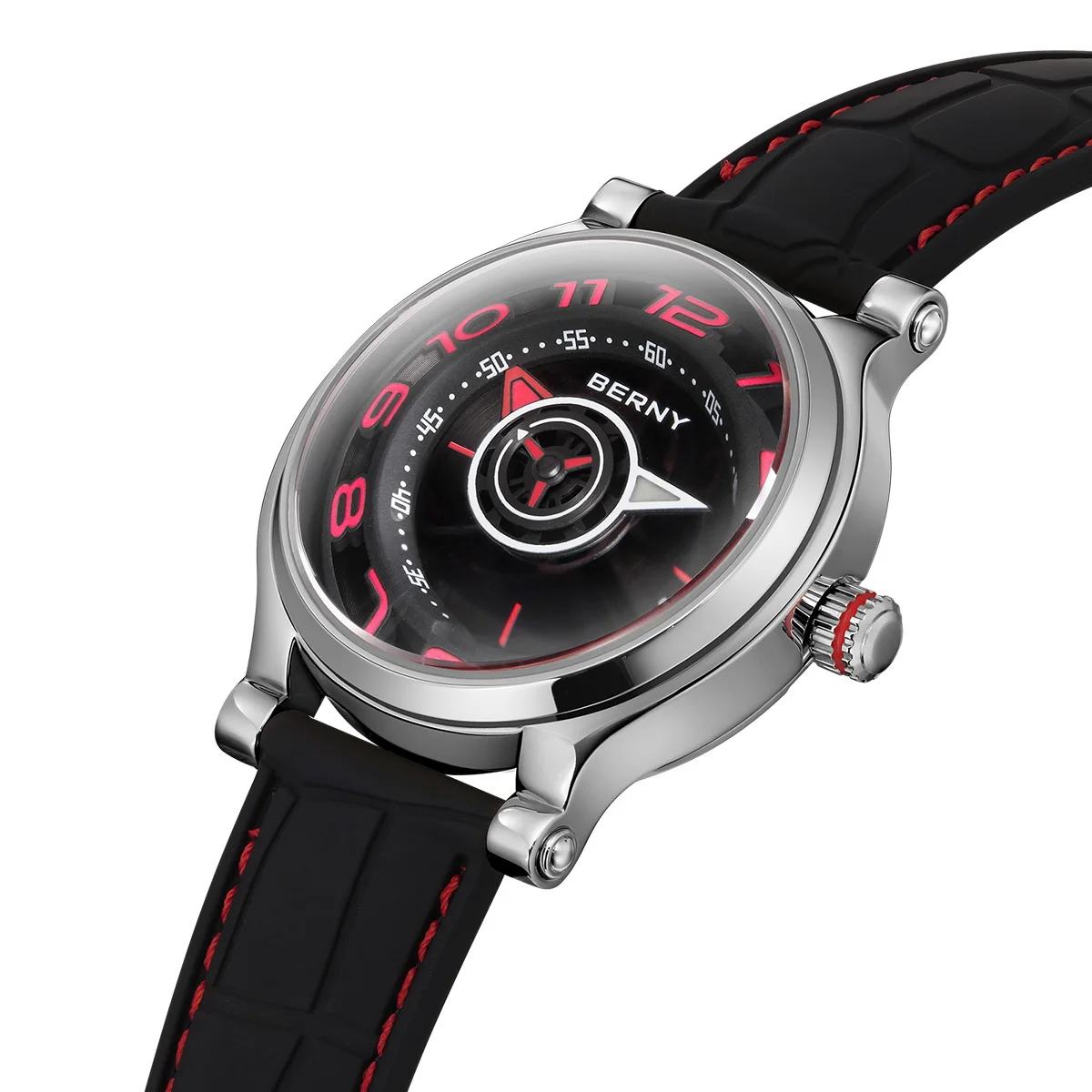
Field Maintenance and Combat Reliability
Pre-Deployment Inspection Protocols
Before entering combat zones, watches should undergo systematic inspection:
- Water resistance verification
- Case and crown seal integrity check
- Pressure testing if equipment available
Visual inspection for case damage
Movement function assessment
- Accuracy testing over 24-48 hours
- Function testing of all complications
Power reserve verification
Structural inspection
- Strap attachment points
- Crystal and bezel security
Crown and pusher function
Power system check
- Battery charge level or winding state
- Solar charging capacity
- Power reserve adequacy for mission duration
Common Failure Points and Preventative Measures
Understanding typical failure modes allows preventative action:
- Crown and pusher seals often fail first under pressure or contamination
Preventative solution: Regular seal replacement, verification of secure crown position
Crystal edges can develop micro-fractures leading to failure
Preventative solution: Bezel protection, impact-absorbing case design
Spring bars may fail under sudden load
Preventative solution: Use of NATO-style pass-through straps, screw bars
Movement shock damage occurs at maximum impact points
- Preventative solution: Enhanced shock protection, proper wearing technique
Field Maintenance Techniques
Basic field maintenance can extend watch functionality during deployment:
– Fresh water rinse after salt water exposure
– Compressed air cleaning of dirt from rotating bezels
– Temporary seal repairs using silicone grease
– Strap replacement using field-expedient materials
Redundancy Planning Considerations
No single timepiece should be the only timekeeping source:
– Primary and backup watch strategy
– Cross-checking between team members’ timepieces
– Alternative timekeeping methods (sun position, radio time checks)
– Function prioritization based on mission requirements
Rugged automatic watches provide the reliability foundation needed for these critical applications.
Considering Your Combat Environment: Making the Right Selection
Desert/High-Heat Deployment Considerations
Desert environments present unique challenges for timekeeping:
– Solar watches excel with abundant light but must withstand extreme heat
– Mechanical movements avoid battery degradation issues in sustained high temperatures
– Sand protection requires enhanced crown sealing and case integrity
– Hydration timing features become mission-critical
– Light-colored dials may reduce heat absorption but compromise stealth
Arctic/Extreme Cold Operation Requirements
Cold weather operations demand specialized functionality:
– Battery performance dramatically decreases below freezing
– Automatic movements may require more frequent winding due to increased lubricant viscosity
– Glove-compatible features (oversized crowns, pushers) become essential
– Anti-fog treatments prevent crystal condensation during temperature transitions
– Rubber/silicone straps maintain flexibility better than nylon in extreme cold
Urban Combat Specialization
Urban environments create distinct requirements:
– Subdued lighting capabilities balance visibility with stealth
– Impact protection becomes paramount in close-quarters combat
– Sound discipline may favor quartz over automatic movements
– Dust and debris protection requires enhanced sealing
– Low-profile designs prevent snagging on structures during movement
The right selection from military-inspired automatic watches can provide the specific capabilities needed for these varied environments.
Can a Quality Field Watch Fail in Combat? Understanding Limitations
Q: Are military-grade watches truly indestructible?
A: No watch is truly indestructible. Even the finest combat watches have specific design limitations. Understanding these limitations helps set realistic expectations and develop contingency plans.
Q: What are the most common causes of watch failure in combat?
A: The most frequent failures include seal degradation leading to water ingress, crystal fractures from direct impacts, crown/pusher damage from lateral forces, and strap attachment failures during high-stress activities.
Q: How can I recognize when a watch is approaching failure?
A: Warning signs include moisture appearing inside the crystal, increasing inaccuracy, stiffness in rotating bezels, crown resistance, and visible damage to case seals.
Q: What’s the realistic service life in continuous combat conditions?
A: Even premium combat watches typically require inspection and maintenance every 6-12 months of continuous field use, with seals being the most frequent replacement need.
The timeline of tactical field watch innovation shows continuous improvements addressing these limitations, but understanding the balance between reliability and functionality remains essential for those depending on these tools in life-or-death situations.

